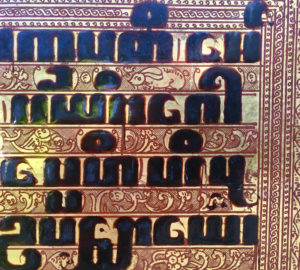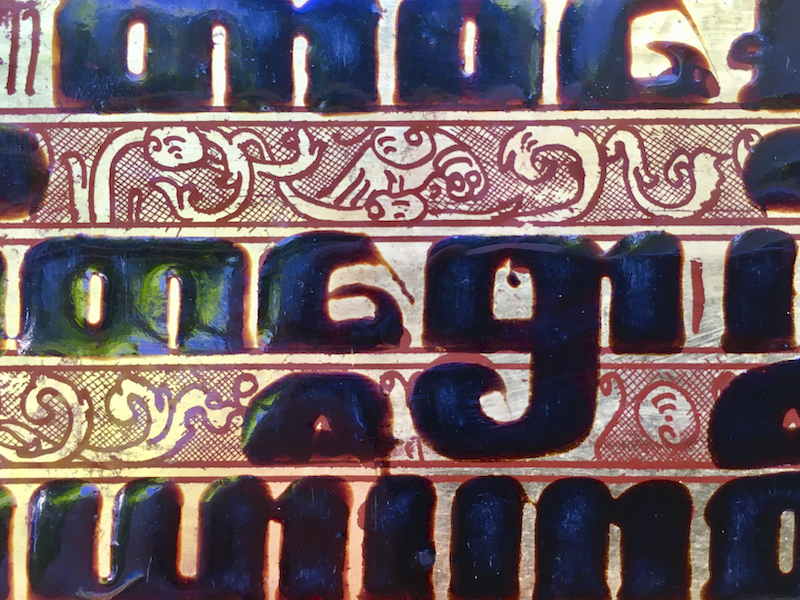
Kammavaca is a Pali term describing an assemblage of passages from the Tipitaka – the Theravada Buddhist canon – that relate to ordination, the bestowing of robes, and other rituals of monastic life. A Kammavaca is a highly ornamental type of manuscript usually commissioned by lay members of society as a work of merit, to be presented to monasteries when a son enters the Buddhist Order as a novice or becomes ordained as a monk. The novitiation ceremony of a Buddhist monk is an important family ritual, the main purpose being to gain merit for their future life. A novice may remain a monk for as long as he wishes, whether for one week or one season of lent or even for life, and he may undergo the initiation ceremony as many times as he likes.

Kammavaca manuscripts are written on a variety of materials, primarily on palm leaf but also on stiffened cloth, or gold, silver, metal or ivory sheets in the shape of palm leaf. Thickly applied lacquer or gilded decoration appears on the leaves themselves and also on the cover boards. The Pali text is written in black lacquer in ornate Burmese characters known as ‘tamarind-seed’ script, also referred to as ‘square’ script, which differs from the usual round Burmese writing.

Our copy was a generous gift to Sooney from a dear friend and long-time collector of Southeast Asian art and memorabilia.
Source: The British Museum
